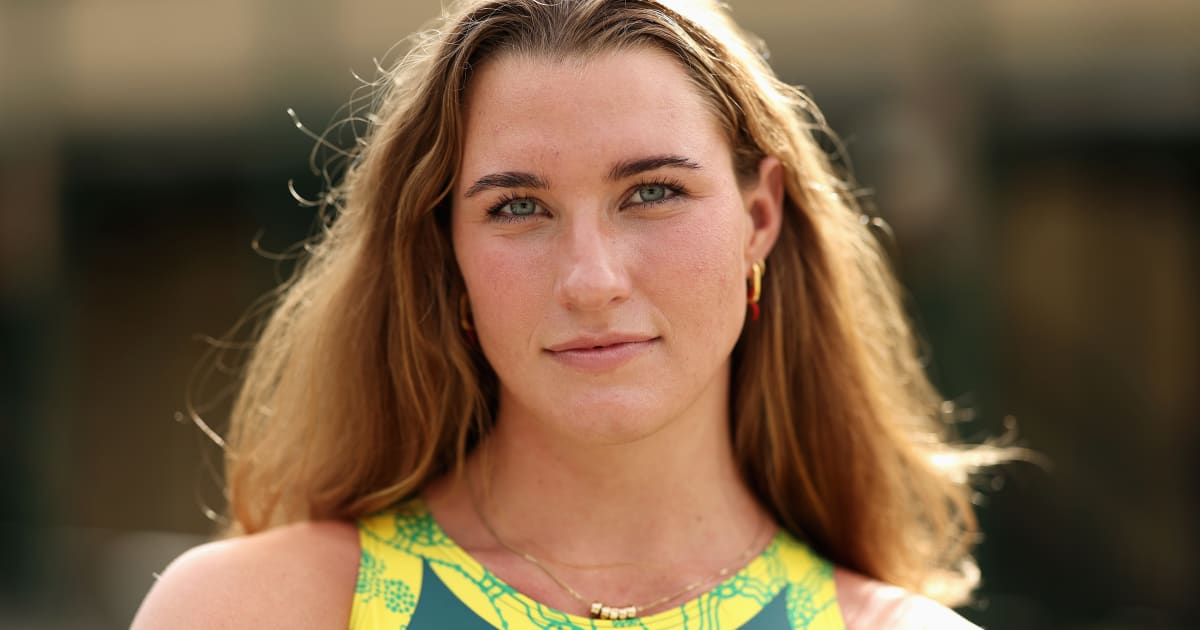It was ‘crazy’ to tell camogie players what to wear, says Cork tennis legend, 91

Of all the many words spoken and typed about the camogie ‘skorts’ row, few will have the authority of those uttered by the remarkable June Ann Byrne.Just a few weeks shy of her 92nd birthday, this Cobh-born woman is one of Ireland’s greatest ever tennis talents, and knows a thing or two about the shorts v skirts debate.Who better to ask about the row that pitted Cork players against the camogie governing body, after it decreed they must all wear ‘skorts’, before relenting on Thursday and giving them the choice of shorts.Where does no-nonsense June Ann stand on the issue?“It’s crazy,” she replies instantly. “I don’t think anyone should have the right to tell me what to wear on a tennis court, as long as I’m not running around naked!“The players are better off in shorts, a proper sports outfit, as skirts can blow up, but wear what is convenient and doesn’t embarrass you. It depends on your figure really.”After a lifetime of playing and coaching, June Ann has strong opinions on sportswomen’s clothes.“I wear what I like, I like to be fashionable, not vulgar. I like to dress properly. It should be the same with camogie, hockey, and all those sports.”The lady is truly a force of nature, and a life-long sports competitor. She played hurling as a child during The Emergency - “we’d never heard of camogie, and I wore shorts when I hurled” - before starting at tennis aged 12... just the 80 years ago then.During a successful career, she played at Wimbledon and the French Open, and Fred Perry - the British tennis legend turned sportswear brand - designed some of the stylish clothes she wore on court.June Ann also struck up a friendship with a tennis great called Gussie Moran, who caused a mighty furore at Wimbledon in 1949 when she played in a specially-made outfit of a skirt combined with frilly lace knickers.U.S tennis star Gussie Moran - a friend of June Ann Byrne - models an outfit in 1968. Her short skirt and lace knickers combo at Wimbledon in 1949 caused controversy and made her famous.Yes, the clothes police where sportswomen were concerned were around then as well!American Gussie’s life story is worthy of a book and film of its own.June Ann remembers her friend as “stylish”, and Gussie certainly liked to stand out on court.She had initially asked permission to wear a coloured outfit ahead of her Wimbledon debut in 1949, but the stuffy All England Club refused to bend its all-white rules. So, Gussie asked a designer to come up with a skirt much shorter than the then common knee-length one.If that wasn’t scandalous enough, when she started playing, her lace-trimmed knickers became visible to all and sundry. Oh I say! - as many a Brit may have spluttered in 1949.In an early version of upskirting, photographers lay on the ground to get the most revealing images of her while she played.After the match, All England Club chairman, Sir Louis Greig, banished the designer of the outfit for “having drawn attention to the sexual area”.The horrified All England Club’s committee then accused Gussie of bringing “vulgarity and sin into tennis”, and the issue was even raised in the Houses of Parliament.On the flip side, the controversy earned the American the nickname ‘Gorgeous Gussie’ and she became an overnight star.The Marx Brothers invited her to join their act. A racehorse, an aircraft and a restaurant’s special sauce were named after her, and she was voted the best dressed sports woman by the U.S Fashion Academy.June Ann was only 16 at the time of the controversy, but bats it away as “a storm in a teacup”. She went on to befriend Gussie and recalls: “She invited me to the top of a skyscraper in Manhattan for lunch. She was very nice. Gussie was very stylish, and never immoral.”June Ann Byrne, née Fitzpatrick, was born in 1933, daughter of a Chief Engineer on Haulbowline. The family moved to Dublin when she was a child, but she made regular forays back to Cobh to stay with her grandparents, who lived at 4, Westbourne Place, beside the Commodore Hotel.The family were all sporty - June Ann’s parents met when playing badminton, and in the year she was born, her mother’s sister won a mixed doubles tennis title in New York.June Ann used to swim and row punts in the sea off Cobh. As a child, she also played hurling in Cork when teams were short, and joined Rushbrooke Lawn Tennis & Croquet Club.“I brought my ten shilling note to Miss Harrington, who was the club treasurer at the time,” she recalls.June Ann remembers learning how to play the game by watching what the good players did and practicing against a wall. “I was a good mimic. I only ever had two lessons - I found them boring!”However, she says they were difficult times for girls and women, when the “holy Church” dominated.“Girls were told sport was bad for our bodies. I was playing tennis aged 15 when I was told my short sleeves were immoral - I gave that person a look!”As she honed her talent for tennis, June Ann began winning junior championships, and got to the final of the girls’ singles competition at Wimbledon aged 17, straight after finishing her Leaving Cert.She would go on to appear at Wimbledon every year but one from 1954 to 1960, and twice made it to the last-16 in the ladies’ singles and mixed doubles.Her tennis career also took her to the mixed doubles semi-finals of Roland Garros in 1958, where she played on centre court. She was invited back to the French Open as a guest more than 60 years later.After studying occupational therapy, June Ann moved to America for three years, where she won tennis tournaments and regulary played with her friend, Gussie Moran.She was also in charge of selection for Ireland’s Davis Cup team in the early 1970s, and has coached the game all over the world.As recently as 2018, this indefatigable woman was still winning tennis trophies, in that case the over 85s section at the ITF Super-Seniors World Championships in Croatia.Sadly, she says there are very few people left to play in her age group, at almost 92 - but, despite getting a new hip a few years ago, she adds: “I can still run a mile.”I wouldn’t doubt you, June Ann.




.jpg)






